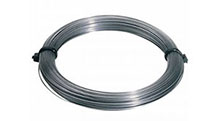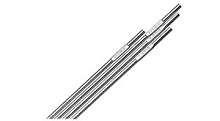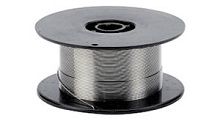Nickel 200 possesses good mechanical properties over a wide range of temperature and superb resistance to many corrosives, particularly hydroxides.Nickel 200 has good resistance to corrosion in alkalis and acids and is most suitable under reducing conditions. Exceptional resistance to caustic alkalis up to the molten state. In acid, alkaline and neutral salt solutions the material demonstrates great resistance, however, in oxidizing salt solutions stark attack will take place. Resistant to every dry gas at room temperature and in dry chlorine and hydrogen chloride can be used in temperatures up to 550oC. Resistance to mineral acids varies with respect to temperature and concentration and whether the solution is aired or not. Corrosion resistance improves in de-aerated acid.Commercially pure nickel is soft and “gummy” to machine. However, it can be machined with standard tooling. High-speed-steel tools work better than carbide tooling and it is important to maintain a high positive rake angle on cutting tools. Nickel is readily formed by all of the conventional methods. It behaves in a similar way to plain carbon steel, except that more power is needed to form nickel. All of the welding and joining methods work with nickel, in particular the shielded metal-arc, gas tungsten-arc and gas metal-arc welding methods are recommended. Use nickel filler wire or electrodes. Annealing is done at 1500 oF to 1300 oF and air cool. Forging should be done at 2250 OF to 1700 OF. Hot working may be done in the range of 2200 OF to 1200 OF.Cold working may be done using standard tooling as for plain carbon steels. More power is needed as the nickel material has a higher elastic limit than steel and thus resists deformation. Hardens due to cold working only.
Nickel 201 is a pure formed Nickel with similar properties to Nickel 200 but with a lower carbon content to prevent embrittlement by inter-granular carbon at elevated temperatures.It possesses good resistance to corrosion in acids and alkalis and is best useful in reducing conditions. Exceptional resistance to caustic alkalis up to the molten state. In acid, alkaline and neutral salt solutions the material shows great resistance, but in oxidizing salt solutions severe attack will ensue.Resistant to all dry gases at room temperature and in dry chlorine and hydrogen chloride may be used in temperatures up to 550oC. Resistance to mineral acids varies according to temperature and concentration and whether the solution is aerated or not. Corrosion resistance is better in de-aerated acid. Practically resistant to inter granular attacks above 315oC, chlorates must be kept to a minimum.Machinability is the same as for Nickel 200. The 201 varieties are softer and “gummy” but can be readily machined by conventional mean. High-speed-steel tools are recommended. Nickel 201 is easily formed by conventional methods, it is especially well suited to forming parts by spinning.It can be welded by standard means as in the case with Nickel 200. However oxyacetylene welding should NOT be used with Nickel 201. Annealing should be done at 1650 oF to 1300 oF depending upon the degree of cold working and time at temperature. Forging should be done in the range of 2100 F to 1200 oF. Hot working may be done in the range of 2100 oF to 1200 oF. Cold working is accomplished with standard tooling. Hardens only by cold working.



